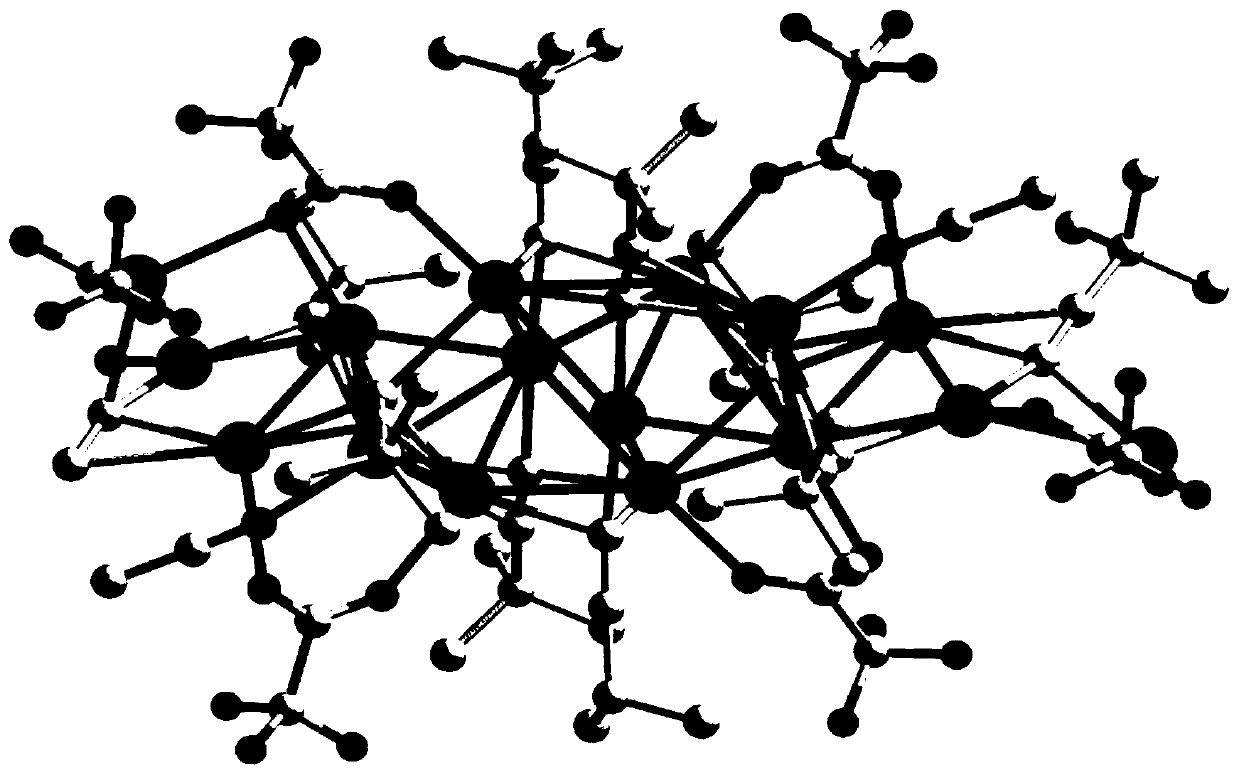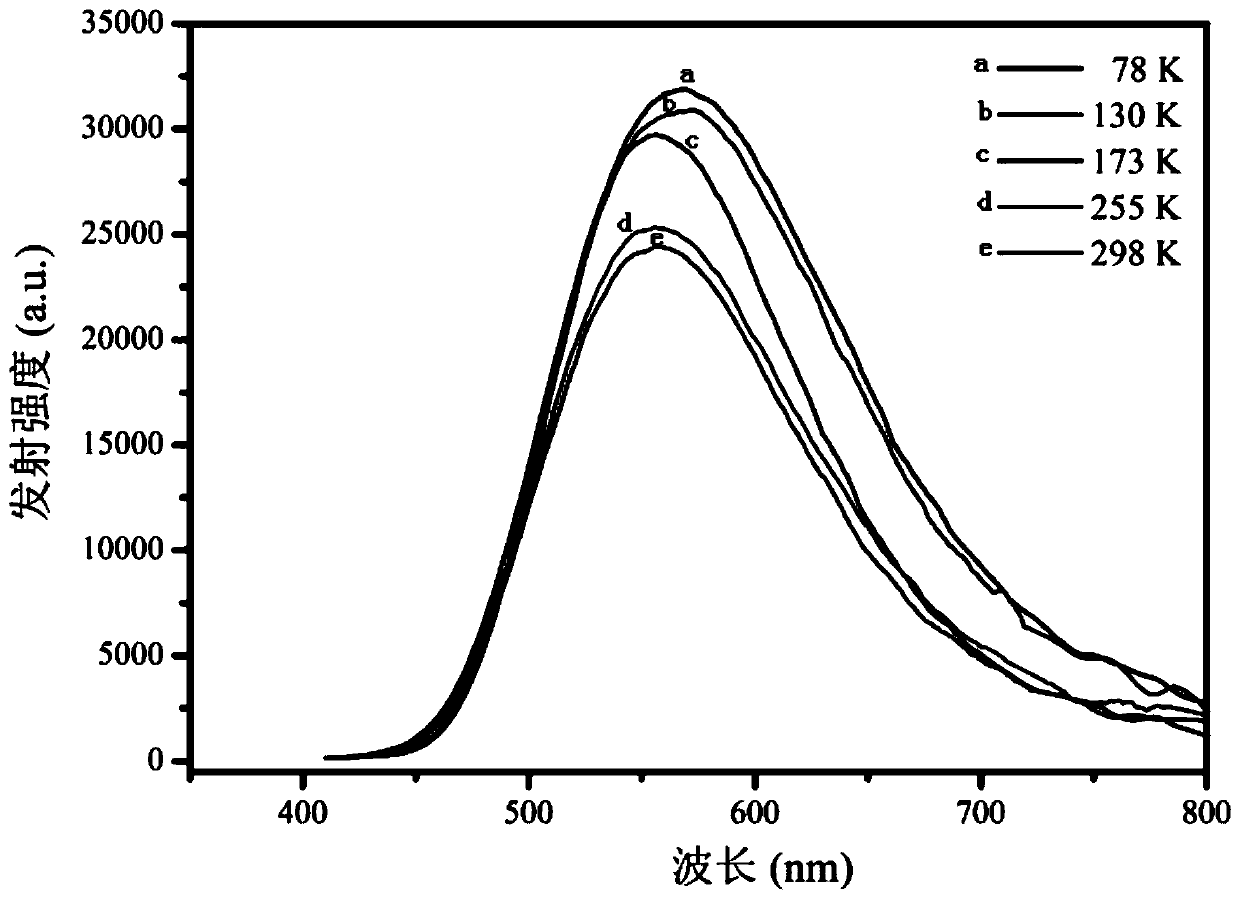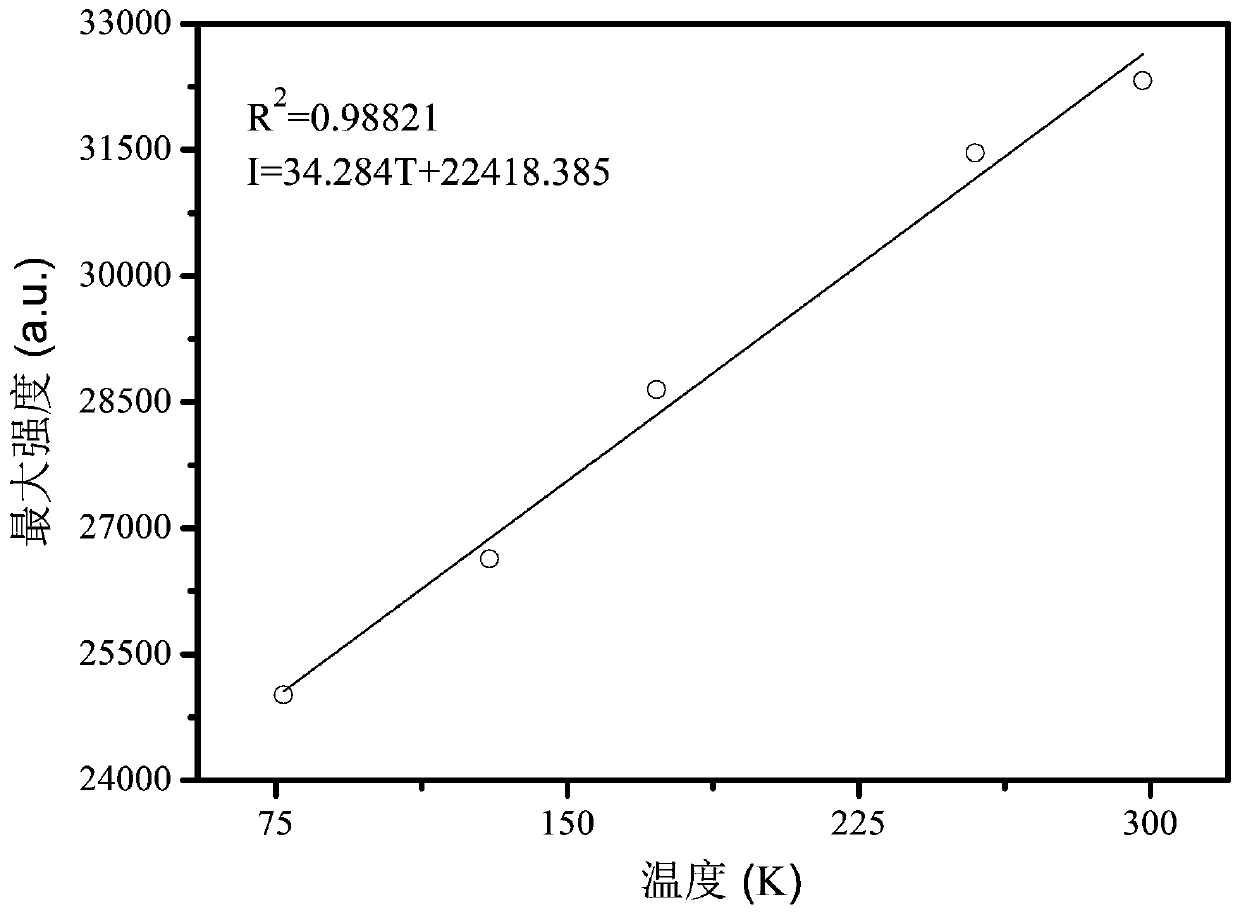Eight-core alkyne silver cluster material with thermochromic luminescent property, and preparation method and application thereof
A thermal discoloration and silver cluster technology, applied in the direction of color-changing fluorescent materials, chemical instruments and methods, thermometers with physical/chemical changes, etc., can solve the problem of uncontrollable synthesis reaction of high-nuclear silver clusters, and achieve excellent thermal discoloration The effect of glowing properties
- Summary
- Abstract
- Description
- Claims
- Application Information
AI Technical Summary
Problems solved by technology
Method used
Image
Examples
Embodiment 1
[0035] Example 1: Synthesis of thermochromic luminescent octanuclear silver alkyne cluster materials
[0036] [AgC≡C t Bu] n (0.0566g, 0.2994mmol) and CF 3 COOAg (0.0660g, 0.2987mmol) was added to the reactor, and CH 3 CN was used as a solvent, and then put into an oven at 70°C to react for 24 hours, and left at room temperature to obtain a yellow suspension, the pH of which was 5.9;
[0037]Filter the yellow suspension through filter paper to obtain a colorless and transparent liquid, and store the colorless and transparent liquid in a beaker, slowly volatilize at room temperature, and obtain a colorless block crystal after about two days of volatilization , which is a thermochromic luminescent octanuclear silver alkyne cluster material.
Embodiment 2
[0038] Example 2: Thermal discoloration of thermochromic luminescent octanuclear silver alkyne cluster materials
[0039] The thermochromic luminescent octanuclear silver alkyne cluster material sample prepared in Example 1 emits faint purple light at room temperature under the irradiation of an ultraviolet lamp. When the sample was soaked in liquid nitrogen, it emitted an intense green light under the same UV light. When the sample temperature gradually increased to room temperature, its purple color returned. The above-mentioned thermochromic luminescent behavior visible to the naked eye is reversible and can be applied to temperature sensing. The linear graph between the emission intensity and temperature corresponding to the thermochromic luminescent octanuclear silver alkyne cluster material image 3 .
Embodiment 3
[0040] Example 3: Physical performance detection of synthetic thermochromic luminescent octanuclear silver alkyne cluster material
[0041] The thermochromic luminescent eight-nuclear silver alkyne cluster material obtained in Example 1 was further characterized, and the process was as follows:
[0042] (1) Determination of crystal structure
[0043] The X-ray single crystal diffraction data of the complexes were collected and measured on a Bruker D8QUEST diffractometer with a single crystal sample of appropriate size. Graphite monochromator was used, Mo-Kα (λ=0.071073nm) was used as light source, and Saint software package was used for data reduction. The structure was analyzed with the SHELXL-2014 program, and the fill-matrix least-squares refinement based on F 2 ) for structural refinement.
[0044] Detailed crystal determination data are shown in Table 1, important bond length and bond angle data are shown in Table 2, and crystal structure diagrams are shown in figure ...
PUM
 Login to View More
Login to View More Abstract
Description
Claims
Application Information
 Login to View More
Login to View More - R&D
- Intellectual Property
- Life Sciences
- Materials
- Tech Scout
- Unparalleled Data Quality
- Higher Quality Content
- 60% Fewer Hallucinations
Browse by: Latest US Patents, China's latest patents, Technical Efficacy Thesaurus, Application Domain, Technology Topic, Popular Technical Reports.
© 2025 PatSnap. All rights reserved.Legal|Privacy policy|Modern Slavery Act Transparency Statement|Sitemap|About US| Contact US: help@patsnap.com



